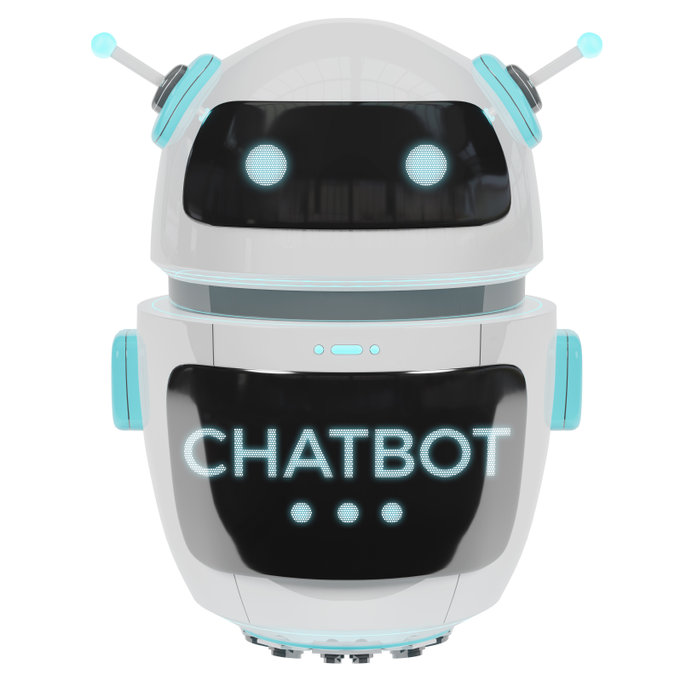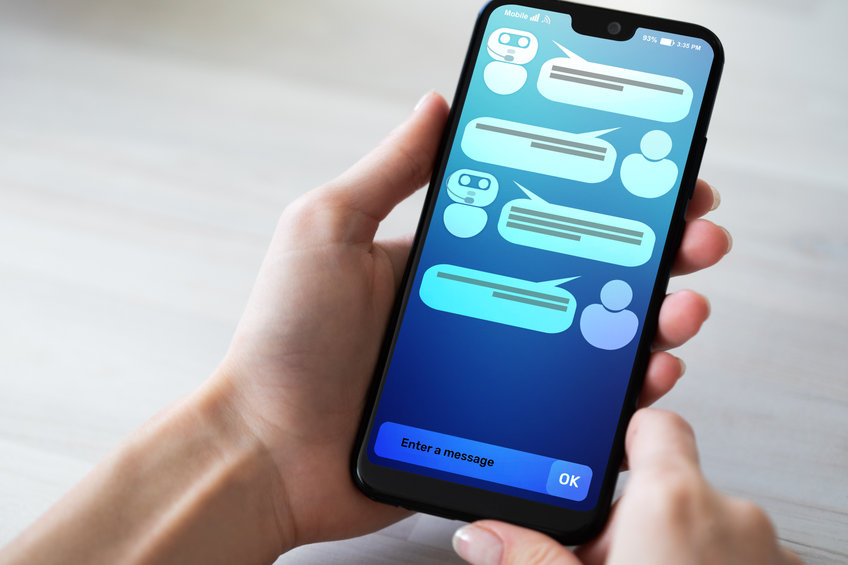
Chatbots and artificial intelligence (AI) are rapidly growing tools that support sales, marketing and customer experience initiatives. Yet, some businesses still hesitate to invest in AI and chatbots. They are concerned they may appear as disingenuous, impersonal or ineffective due to the lack of human involvement. Consumers today, however, are accustomed to a fast-paced, tech-driven environment. This is why chatbots are quickly making their way onto many B2B websites. Simply stated, they support a customer-centric business model.
What is a Chatbot?
Chatbots are a communication tool utilized across digital platforms that interact with users based on responses curated through machine learning and powered by AI. According to technology leader Oracle, “At the most basic level, a chatbot is a computer program that simulates and processes human conversation (either written or spoken), allowing humans to interact with digital devices as if they were communicating with a real person.” Chatbots can be simple, answering simple queries with short responses, or sophisticated, assuming the role of digital assistants capable of learning and delivering increasing levels of personalization over time.
You’ve likely seen chatbots pop up in the bottom corner of your computer screen on various websites. Chatbots and similar AI also are prevalent via automated SMS and email technology or inside apps and social media platforms. Chatbots enjoy widespread use across varied industries including technology, finance, real estate, insurance, medical assistance and even mental health, physical and occupational therapy.
The cost for a chatbot depends largely on the scope of its services and the number of site visitors it interacts with. After the initial design and setup cost, the monthly fee for third-party software ranges from $50 to $500 per month. Developing a fully customized chatbot internally is far more expensive.
Chatbots are Powerful Tools

With their growing use, chatbots have become a major communication trend. But how and why are they effective? The following four statistics showcase why consumers use them and how companies can make chatbots count:
- Nearly half of consumers and clients would rather connect with a company via chat than through any other means of contact. Our communication preferences have become increasingly more digital as remote options and efficiency stay top of mind. Most users prefer to use a chat option to keep up with their fast-paced and digitally connected lives. By providing the accessible option to connect with a chatbot, users can receive direct and immediate answers to an inquiry without the extra step of picking up the phone, searching through your website or sending an email. This supports buyer enablement and an improved customer experience. A few direct responses from a chatbot can empower your prospects with the right information to guide themselves through the early stages of the sales funnel.
- The number-one use case for chatbots is to get a quick answer to a query. The truth is buyers today are busy. They don’t always have the time to make a phone call and wait on hold or for a return call. If prospects and customers need to search your website for answers to their questions, it can result in lost sales. Chatbots can eliminate this problem by providing answers to quick questions. Chatbots also resolve basic customer service issues traditionally handled by a representative via the phone. Navigating through a maze of phone menus or being transferred across different service departments can both turn off prospects from making a purchase or damage the customer experience.
- 64 percent of internet users say the best chatbot feature is 24-hour service. Today’s digital marketplace is nearly borderless, making nationwide and global sales a viable reality for many companies. That said, it’s a financial and logistical challenge to staff a customer service department that can provide 24-hour support. Chatbots fulfill this need. They can quickly provide 24/7 assistance regardless of the consumer’s location, at a cost far less than an employee. If the user can’t find a quick answer, chatbots also allow for scheduling functions so a sales or support rep can follow up at a time that works for the prospect.
- 55 percent of businesses that use chatbots generate more high-quality leads. Chatbots empower prospects and customers with the information they need to purchase and use your products and services. They also provide the company with valuable data as well. AI is designed to learn from its interactions. The more the bot interacts with individuals, tackling various needs, the more data it gathers and synthesizes, ultimately improving future automated engagement. Of course, this data can also be harnessed by sales and marketing teams to discover vital information about the buyer personas engaging with your website. Chatbots supply data about the main challenges and inquiries from your customer base. Use this information to address the needs and challenges of your target market before their first contact, whether through AI, content or adjustments to your services and products. This keeps your sales, marketing and development teams ahead of the curve when anticipating the needs of prospects and clients, and allows them to focus on client loyalty, engagement and success.
Chatbots as Leverage, Not a Replacement

Despite their design to mimic representatives and human interaction, chatbots will never completely replace sales and support teams. A personal connection will always be vital to successful business growth. Chatbots are simply here to help users access the right information at the right stage in their buyer’s journey. AI can take care of the quick questions, some of the initial work and data collection. This allows your sales, marketing and customer service teams to focus on more in-depth communication, problem-solving and revenue-generating projects. Effective communication initiates growth. If you can expedite that process and empower users with what they need quicker, you create a meaningful corporate differential.

Comments are closed.